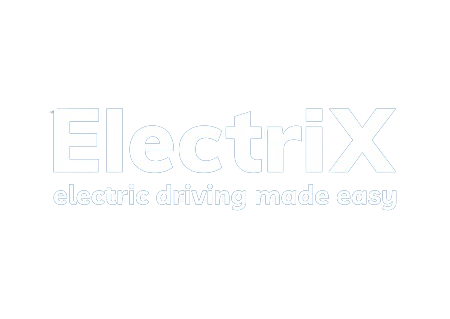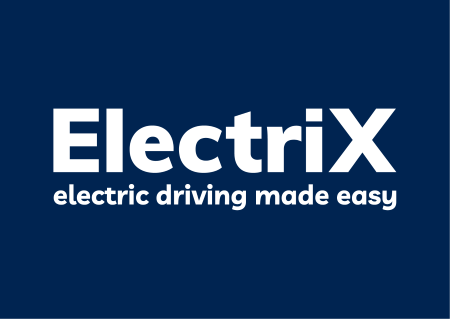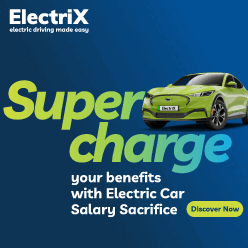In case you missed it see what’s in this section
Let's Talk
Your Total Guide To lifestyle
TGt Meets...Gill Nowell, Head of EV Communications
Meet our latest TGt Meets Gill Nowell, the head of EV Communications.
For organisations looking to electrify their fleets, what are key considerations when it comes to charging?
Organisations should be supporting a comfortable and informed transition to electric. Clear communication with employees who will be driving electric vehicles is key; understanding what kind of mileage they’ll be doing, and where and how they will charge is critical.
It will be important to consider whether installing chargers in the workplace is an option, or whether drivers will be able to charge at home. And indeed what local and en route charging facilities are available – we now have over 45k public chargers across the UK, so there are plenty of options to choose from!
If we focus on workplace charging for a moment, there’s a government grant available, run by the Office for Zero Emission Vehicles (OZEV) and administered by the Driver and Vehicle Licensing Agency (DVLA). The grant covers up to 75% of the total costs of the purchase and installation of EV chargepoints (inclusive of VAT), capped at a maximum of £350 per socket, and 40 sockets across all sites per applicant.
How can EV salary sacrifice work for companies seeking to support their employees to go electric?
General salary sacrifice schemes are now adopted by over 60% of UK businesses with perks ranging from childcare to gym memberships. Salary sacrifice is basically where employees voluntarily give up a portion of their salary in return for a benefit. It’s no surprise then, that EV salary sacrifice works in exactly the same way, offering an affordable way to switch to electric with savings of up to 40% plus associated low running costs, environmental benefits through helping to improve local air quality, and further cost savings through exemption from ULEZ and clean air zone charges.
EV salary sacrifice schemes are also proven to help attract and retain talent; sustainability is a big part of our lives and the choices that we make. A recent survey showed that 83% of employees would have greater loyalty to an organisation that helps them contribute to their sustainability goals, and indeed the Companies Act 2006 requires large and medium-sized companies to report on the business’s environmental impact on an annual basis. By implementing an EV salary sacrifice scheme, your business can align itself with environmental goals, demonstrate corporate social responsibility and enhance your reputation among employees, customers, stakeholders and the wider community. Encouraging employees to opt for electric vehicles means your business is actively contributing to reducing carbon emissions, cutting noise pollution and combatting climate change. So it’s a win-win!
ElectriX offers EV salary sacrifice – we provide an all-inclusive package of electric car, home charger and insurance. Through lease specialists CBVC we offer over 100 electric car models from more than 30 manufacturers – many available within just 30 days. Through our partner Indra we provide smart home chargers to energise every journey, and we provide bespoke insurance through Flow, our digital sister company. With our best in market tailored approach to risk, we can also safeguard your business with the most flexible range of protection options should employees leave.
Regulations state that charge points have smart functionality. What does this mean and why is it important?
Smart charging is mandated through the Automated and Electric Vehicles Act. A smart charger is essentially one which can be remotely managed, if necessary, to manage any potential impact on the local electricity network. The requirement for EV chargers to be smart is basically there to protect you and I as electricity customers – to help prevent the lights going out – with the added benefit of low-cost charging thanks to EV-friendly off-peak energy tariffs.
The Distribution Network Operators have been working ahead of need to manage EV uptake on their energy networks since 2012 – and smart charging has come about largely as a result of all that work and learning. I was involved in a number of real-world trials involving hundreds of early EV drivers to understand the impact of clusters of EVs charging on the Low Voltage network (e.g. My Electric Avenue 2012 – 2015, Electric Nation, 2016 – 2018). We learnt to so much about driving and charging behaviour, and whether EV drivers would accept having their charging managed - in order to protect the network and avoid costly reinforcement that would potentially mean bills going up.
So by having a smart charger installed at home – I have an Indra Smart Home PRO – I can schedule my charging using an app, so that my car only charges during off-peak hours when electricity is cheapest and greenest. Thanks to smart charging, it costs me less than £5 to fully charge my Kia e-Niro, so that’s 280 miles for under a fiver.
To get into the detail of smart charging - every new charger from July 2022 must be set to default off-peak charging hours, although the user or owner can still override this feature if needed despite the off-peak setting. Also, smart charge points must have a randomised delayed charging ability of about 10 minutes – which means that charging may be delayed either at the start or end of the charging session. This feature helps to protect the Low Voltage network from any surges in demand. And again, it can be overridden if needs be.
So in summary, smart charging is there to protect the local electricity network, to avoid costly network reinforcement – or at least enable a planned and managed approach to network upgrades, and it means that us EV drivers can benefit from really low off-peak energy tariffs, making charging at home really cheap and convenient. Smart charging is a good thing.
The government is aiming for 300,000 public chargers to be available by 2030 - do you feel this is achievable? What are the challenges to meeting this target?
The Government goal is to have a minimum of 300,000 public chargers rolled out by 2030 but they have also said there could potentially be more than double that number. We currently have over 45k public chargers. The most crucial thing is that they are the right speed in the right (safe) locations; they need to work, be accessible and easy to use.
The good news is that Government is implementing a series of improvements to public charging under the Public Charge Point Regulations 2023, covering reliability – on average a 99% rate of reliability must be maintained (although only applies to chargers above 50kW), enforcing a 24/7 helpline, and pricing must be transparent – so you know what you’ve paid! Contactless payment must also be available – on new chargers above 8kW and existing rapid chargers above 50kW. It also supports open data and promotes interoperability and payment roaming services.
So this is all good news… what is also good news is that a new trade body called ChargeUK has recently launched, whose members comprise of the vast majority of UK CPOs, headed up by Osprey’s Ian Johnston. They are committed to doubling the number of public chargers in a very short space of time, notwithstanding issues around cost and complexity of grid connections.
And therein lies the key issue in charging infrastructure roll-out – the cost, time and complexity of grid connections. But I believe this is high up on the list of concerns that ChargeUK are lobbying on.
There is understandably a lot of focus on public charging infrastructure – however most EV drivers today do most of their charging at home. There are over 400k home and workplace chargers, and for those people who can’t charge at home, an increasing number of on-street or lamppost chargers, and other solutions such as charging cable gullies through the pavement – those solutions have the added benefit of being far cheaper than using public chargers, given that the rate of VAT on domestic electricity is only 5%, whereas it’s 20% on public charging.
Overall the EV charging infrastructure is making great progress. And once you’re driving electric, it’s hard, if not impossible, to go back to anything else!
To find out more then please visit their website here.
Weather in Manchester
Listings










